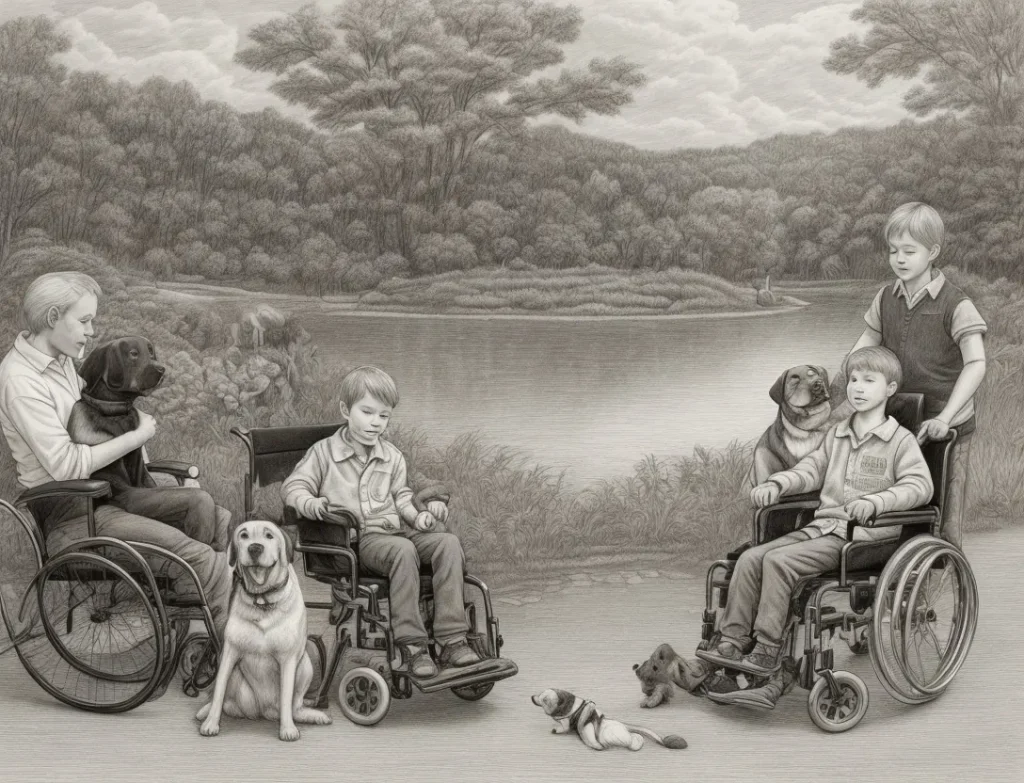The Healing Bond between Humans and Animals
In a world where stress and anxiety have become a part of daily life, people are increasingly seeking alternative methods to improve their mental and physical well-being. One such method that has gained popularity in recent years is Animal-Assisted Therapy (AAT). This unique therapeutic approach involves animals as an integral part of the healing process. In this article, we will delve into the world of Animal-Assisted Therapy, exploring its history, benefits, techniques, and the profound impact animals have on human healing.
What is Animal-Assisted Therapy?

At its core, Animal-Assisted Therapy is a form of complementary therapy that utilizes trained animals to facilitate emotional, psychological, and physical healing in individuals. These animals, often referred to as therapy animals, play a crucial role in providing comfort, companionship, and unconditional love to those in need. The therapy can take place in various settings, such as hospitals, nursing homes, schools, and rehabilitation centers.
History of Animal-Assisted Therapy
The roots of Animal-Assisted Therapy can be traced back to ancient civilizations, where animals were recognized for their soothing and nurturing effects. However, the formal use of animals in therapeutic settings began in the late 18th century when Florence Nightingale observed the positive impact of animals on patients’ morale. Over the years, the practice evolved, and in the 1960s, the modern concept of Animal-Assisted Therapy took shape.
Types of Animals Used in Therapy
Various animals can serve as therapy animals, each offering unique benefits. Dogs are the most commonly used therapy animals due to their loyalty and ability to bond with humans quickly. Cats are also popular for their calming presence. Additionally, horses, rabbits, birds, and even dolphins have been utilized in specific therapy programs, catering to different needs.
How Animal-Assisted Therapy Works
Animal-Assisted Therapy sessions are typically conducted by trained professionals, including therapists, psychologists, and healthcare providers. The therapy plan is tailored to the individual’s needs and goals. During sessions, individuals interact with the therapy animals through activities such as petting, grooming, and playing. These interactions create a positive and enjoyable experience, promoting healing and emotional growth.
Animal-Assisted Therapy Techniques
There are several techniques employed in Animal-Assisted Therapy to address different conditions. For instance, tactile stimulation involves physical touch, which can be soothing for those with anxiety disorders. Equine-assisted therapy utilizes horseback riding to improve balance, coordination, and confidence in individuals with physical disabilities. The diversity of techniques allows for personalized and effective treatment approaches.
The Role of Animals in Healing

The bond between humans and animals is exceptional, and this bond plays a vital role in the healing process. Animals offer unconditional love, loyalty, and acceptance, which can be transformative for individuals struggling with emotional or physical challenges. The non-verbal communication and genuine connection established with therapy animals enable individuals to feel understood and supported.
Popularity and Acceptance of Animal-Assisted Therapy
In recent years, Animal-Assisted Therapy has gained significant popularity and acceptance worldwide. As more research highlights its effectiveness, healthcare providers and institutions have started incorporating it into treatment plans. The warm reception from patients and the growing demand for alternative therapies have contributed to its widespread adoption.
Scientific Evidence and Studies
The efficacy of Animal-Assisted Therapy is supported by numerous scientific studies. Research has demonstrated that interactions with therapy animals release oxytocin, the “bonding hormone,” which fosters feelings of trust and connection. Moreover, AAT has been shown to reduce symptoms of PTSD, alleviate pain, and improve social skills, particularly in children with autism.
Animal-Assisted Therapy in Mental Health

In the realm of mental health, Animal-Assisted Therapy has shown promising results. It can help individuals with anxiety disorders, depression, and post-traumatic stress disorder (PTSD) to cope with their symptoms more effectively. The presence of therapy animals provides emotional support, reduces feelings of loneliness, and encourages a sense of purpose.
Animal-Assisted Therapy in Physical Health
Animal-Assisted Therapy is not limited to mental health; it also benefits individuals with physical ailments. For instance, therapy animals can assist in physical rehabilitation, encouraging patients to perform exercises and activities. Additionally, spending time with animals can lead to reduced pain perception and improved overall well-being.
Ethical Considerations
While Animal-Assisted Therapy offers numerous advantages, it also raises ethical concerns. Ensuring the well-being of therapy animals, obtaining informed consent from patients, and adhering to proper hygiene standards are essential ethical considerations. Proper training and certification of therapy animals are crucial to ensure their suitability for therapeutic purposes.
Training Animals for Therapy Work

Therapy animals undergo extensive training to prepare them for their roles. They must be well-behaved, adaptable to various environments, and responsive to different people and situations. The training process involves socialization, obedience training, and exposure to potential triggers they might encounter during therapy sessions.
Future of Animal-Assisted Therapy
The future of Animal-Assisted Therapy looks promising, with ongoing research and advancements in the field. As more data emerges, the integration of AAT into conventional healthcare is likely to increase. Additionally, collaborations between healthcare professionals, animal trainers, and researchers will contribute to refining and expanding the application of Animal-Assisted Therapy For Kids.
Conclusion
Animal-Assisted Therapy For Kids is a remarkable healing approach that harnesses the power of the human-animal bond to enhance well-being. From addressing mental health issues to aiding physical rehabilitation, therapy animals have proven to be valuable companions in the healing journey. As the world continues to recognize the significance of holistic therapies, Animal-Assisted Therapy is poised to play an increasingly vital role in healthcare.
FAQs
Is Animal-Assisted Therapy suitable for everyone?
- Animal-Assisted Therapy can be beneficial for many individuals, but it may not be suitable for everyone. It is essential to consider individual needs and preferences before incorporating AAT into a treatment plan.
Can any animal be a therapy animal?
- Not all animals are suitable for therapy work. Therapy animals undergo specific training and evaluations to ensure they are well-suited for their roles.
Does Animal-Assisted Therapy replace traditional treatments?
- Animal-Assisted Therapy is typically used as a complementary therapy alongside conventional treatments, not as a replacement.
Are there any risks associated with Animal-Assisted Therapy?
- While Animal-Assisted Therapy is generally safe, there are some risks, such as potential allergies or fear of animals in some individuals.
Can Animal-Assisted Therapy help with children’s emotional development?
- Yes, Animal-Assisted Therapy has shown positive effects on children’s emotional development, fostering empathy, and improving social skills.


























